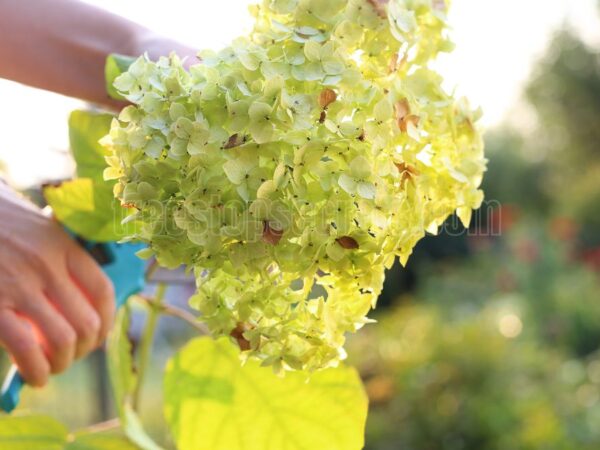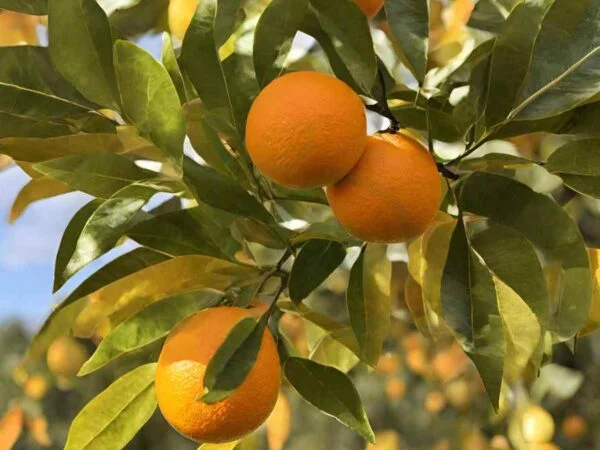Petunias are a favorite among gardeners for their vibrant colors and ease of care. Originating from South America, these flowers have been cultivated for centuries, bringing joy to gardens worldwide. Knowing how to plant a petunia can transform your outdoor space into a lively display.
With just a few simple steps, you can enjoy their beauty all season long. This guide will cover everything from soil preparation to watering tips. Whether you're a seasoned gardener or just starting out, planting petunias is an enjoyable project that yields stunning results. Get ready to add a splash of color to your garden with these charming blooms!
Key Takeaways
-
Choose a sunny spot with well-drained soil for planting petunias to ensure they thrive.
-
Plant petunias in the spring after the last frost for the best growth results.
-
Water petunias regularly, especially during dry spells, but avoid overwatering to prevent root rot.
-
Prune spent flowers to encourage new blooms and maintain a tidy appearance.
-
Keep an eye out for pests like aphids and treat them promptly to protect your plants.
-
Propagate petunias by taking cuttings in the summer, which can help you expand your garden easily.
Petunia Overview
Types of Petunias
Petunias fall into three main categories: multiflora, grandiflora, and trailing varieties. Multiflora petunias produce many smaller flowers. They bloom profusely and are great for garden beds. Grandiflora petunias have larger flowers. They offer stunning displays but can be more sensitive to weather conditions. Trailing varieties spread out and cascade over containers or hanging baskets.
Each type has its advantages based on gardening styles. Multiflora suits mass plantings well. Grandiflora works best for focal points in gardens. Trailing varieties are perfect for vertical spaces or to soften edges.
Benefits of Growing Petunias
Growing petunias brings many benefits. Their vibrant colors add beauty to any garden. They bloom from spring until frost, providing a long flowering season. This feature keeps gardens lively throughout the warmer months.
Petunias require low maintenance, making them perfect for beginners. They thrive with minimal care and can withstand various conditions. They attract pollinators like bees and butterflies. This helps create a healthy ecosystem in your garden.
Popular Varieties
Several popular petunia varieties stand out among gardeners. The 'Wave' petunia is known for its spreading nature and vibrant colors. It covers ground quickly and is excellent for borders or hanging baskets.
'Supertunia' offers resilience against heat and rain. Its rich color patterns make it a favorite for many gardeners. This variety blooms continuously throughout the season.
The 'Celebrity' petunia features unique color combinations and compact growth habits. It is ideal for small spaces or container gardening.
Choosing the right variety depends on your climate and garden design. Consider factors like sunlight and space available when selecting your petunias.
Where to Plant Petunias
Ideal Locations
Petunias thrive in sunny spots. They need at least six hours of direct sunlight each day. Avoid planting them in areas with heavy shade. Shade slows their growth and reduces blooms. Wind can damage petunias, so choose locations that offer some protection.
Avoid spots with standing water. Petunias dislike wet roots, which can lead to rot. Raised beds are great for petunias. They improve drainage and make it easier to care for the plants. Containers also work well. They allow you to control soil quality and move plants as needed.
Companion Plants
Pairing petunias with companion plants boosts their health. Marigolds are excellent companions. They repel pests like aphids and nematodes. Lobelia is another good choice. Its trailing habit complements the upright growth of petunias.
Companion planting offers several benefits. It helps with pest control and encourages pollinators. A mix of colors creates a vibrant garden display. For example, plant yellow marigolds alongside purple petunias for a stunning contrast. This combination attracts butterflies and bees while keeping pests away.
Garden Plans
Incorporating petunias into your garden layout requires planning. Consider spacing them about 12 to 18 inches apart. This distance allows air circulation and prevents disease. Grouping petunias in clusters enhances their visual impact.
Plan for seasonal changes too. Some petunia varieties bloom all summer long, while others may fade in late fall. Mix early-blooming flowers with late-bloomers for continuous color throughout the year. Use taller plants behind shorter ones to create depth in your garden design.
How and When to Plant Petunias
Planting Seeds
Start petunia seeds indoors about 10-12 weeks before the last frost date. Fill seed trays with a light soil mix. Place seeds on top and lightly cover them with more soil. Water gently to avoid displacing the seeds.
For outdoor planting, wait until after the last frost. Sow seeds directly in well-drained soil. Keep the soil moist but not soggy. Temperature plays a crucial role in germination. Ideal conditions are between 70°F and 75°F. Provide bright light for about 14 hours each day. This helps seedlings grow strong.
Check your local climate for frost dates. This will guide you on when to start sowing seeds. If you live in a colder area, starting seeds indoors is best.
Transplanting Seedlings
Before moving seedlings outdoors, harden them off. This means gradually exposing them to outdoor conditions over a week or two. Start by placing them outside for a few hours each day, increasing the time gradually.
Choose the right time for transplanting based on seedling growth. Look for seedlings that are about 3-4 inches tall and have several true leaves. They should be sturdy enough to handle the move.
Handle seedlings carefully. Grasp them by their leaves, not the stems, to avoid damage. Dig holes in your garden that are slightly larger than the root ball of each seedling. Space them about 12-18 inches apart for good air circulation.
Best Planting Time
The ideal planting window varies by location but generally falls between late spring and early summer. Check local climate data for specific frost-free dates in your area.
l temperature is significant too. Petunias thrive when soil temperatures reach at least 60°F. You can use a soil thermometer to check this.
Monitor weather forecasts closely before planting. Avoid days with expected frost or heavy rain. Choosing the right moment ensures healthy growth and vibrant blooms.
Petunia Care Tips
Light Needs
Petunias thrive in full sun, requiring at least six hours of direct sunlight daily. Adequate light is crucial for healthy growth and vibrant blooms. Without enough sun, petunias may become leggy and produce fewer flowers.
Light conditions directly impact the plant's vigor. In shady areas, petunias often struggle to bloom. Observing garden light patterns can help determine the best planting spots. Areas that receive morning sun are ideal, as they provide warmth without the harsh afternoon heat.
Soil and Watering
Good soil is essential for petunia health. Amendments like compost or peat moss improve drainage and nutrient content. This helps prevent root rot and promotes strong growth.
Consistent watering is vital. Petunias prefer moist soil but do not tolerate waterlogged conditions. Water them deeply once a week, adjusting frequency based on rainfall. Mulch around the plants retains moisture and regulates soil temperature, further supporting their growth.
Temperature and Humidity
Petunias grow best in temperatures between 60°F and 75°F (15°C to 24°C). This range encourages blooming and robust growth. Extreme heat or cold can stress the plants, leading to poor performance.
High humidity can negatively impact petunia health. It may encourage diseases like powdery mildew. Monitoring local weather patterns helps adjust care practices. If humidity levels rise, increase air circulation around the plants to maintain their health.
Fertilizing Tips
A balanced fertilizer schedule supports vigorous growth and abundant blooms. Use a fertilizer with equal parts nitrogen, phosphorus, and potassium (N-P-K). Following package instructions for application rates ensures proper feeding without over-fertilizing.
Slow-release fertilizers work well for petunias. They provide sustained nutrient availability over time, reducing the need for frequent applications. Fertilizing every four to six weeks during the growing season keeps petunias thriving.
Pruning and Maintenance
Pruning Techniques
Pruning is essential for petunias. It encourages bushier growth and more blooms. When you prune, you remove old stems and leaves. This action allows the plant to focus energy on new growth.
The best time to prune petunias is in early spring and mid-summer. In early spring, cut back any dead or leggy stems. During mid-summer, trim back spent blooms and foliage. Use clean, sharp tools for pruning. This practice prevents damage and stops the spread of diseases.
Deadheading Flowers
Deadheading is another important maintenance task. This process involves removing spent flowers from the plant. By doing this, you encourage continuous blooming throughout the season.
Removing old blooms redirects energy to new flower production. It keeps your petunias looking fresh and vibrant. Aim to deadhead every week or two during the growing season. Pinch off flowers just below the bloom or use scissors for a cleaner cut. Regular deadheading can greatly enhance your plant's performance.
Potting and Repotting
Choosing the right pot and soil is crucial for petunias. Use pots that have drainage holes to prevent waterlogging. A well-draining potting mix is ideal for these flowers. Look for soil that contains organic matter and perlite.
Signs that indicate it's time to repot include roots growing out of the drainage holes or stunted growth. If your petunia appears root-bound, it’s time for a bigger pot.
When repotting, gently remove the plant from its current pot. Be careful not to disturb the root system too much. Place it in a new pot with fresh soil, ensuring the roots are spread out properly.
Pests and Problems
Common Pests
Aphids are one of the most common pests affecting petunias. These small, soft-bodied insects suck sap from the leaves. Spider mites also pose a threat. They create fine webs and cause leaf discoloration.
Signs of pest infestations include curled leaves and stunted growth. You may notice tiny insects on the undersides of leaves. If left untreated, these pests can severely damage your plants.
Organic control methods include introducing beneficial insects like ladybugs. Spraying insecticidal soap can also help. For chemical options, consider using neem oil or systemic insecticides. Always follow label instructions for safe application.
Disease Prevention
Petunias are prone to several diseases, including powdery mildew and root rot. Powdery mildew appears as white spots on leaves and can spread quickly. Root rot often results from overwatering, causing roots to decay.
Preventative measures are crucial for healthy petunias. Proper spacing allows air circulation around plants. Good airflow helps reduce humidity, which prevents mildew. Watering at the base of the plant avoids wetting the foliage.
Regular monitoring is essential. Check plants weekly for early signs of disease. Look for yellowing leaves or unusual spots. Early detection allows for quicker treatment and better outcomes.
Solutions for Issues
Troubleshooting common problems is key to maintaining petunias. Wilting leaves may indicate under or over-watering. Adjust your watering schedule based on weather conditions.
Yellowing leaves often signal nutrient deficiencies or poor drainage. Consider testing soil pH and nutrient levels if this occurs. Adding compost can improve soil quality and provide necessary nutrients.
Environmental factors also contribute to issues. Excessive heat can stress petunias, leading to wilting. Providing shade during peak sun hours can help alleviate this problem.
Consult local gardening resources for additional support. Many extension services offer advice specific to your area’s climate and soil conditions. Online forums and gardening clubs can also provide valuable insights.
How to Propagate Petunias
Seed Propagation
Collecting petunia seeds is simple. Wait until the flowers fade and dry out. The seeds will be in small pods. Gently break open these pods and store the seeds in a cool, dry place. Use paper envelopes or small jars to keep them safe. Label each container with the date and variety of petunia.
Seed propagation is cost-effective for gardeners. Buying seeds is cheaper than purchasing new plants every year. Plus, it allows you to grow different varieties that may not be available at local nurseries.
To ensure seed viability, test a few seeds before planting. Place them on a damp paper towel for a week. If they sprout, they are good to plant. For successful germination rates, use fresh potting soil and water gently. Keep the soil moist but not soggy. Cover the containers with plastic wrap to maintain humidity until seedlings appear.
Cutting Propagation
Taking stem cuttings is an effective way to propagate petunias. Choose healthy stems from existing plants, ideally ones that are 3 to 4 inches long. Cut just below a leaf node using sharp scissors or pruning shears. Remove lower leaves, leaving only a few at the top.
Using rooting hormone can greatly enhance success rates. Dip the cut end of the stem into the hormone powder before planting it in soil. This helps stimulate root growth and speeds up the process.
Ideal conditions for rooting cuttings include high humidity and bright, indirect light. Place cuttings in a plastic bag or under a clear dome to maintain moisture levels. Mist them regularly to prevent drying out. Keep them in a warm spot but avoid direct sunlight, which can scorch the leaves.
Frequently Asked Questions
Watering Needs
Petunias require regular watering. They thrive in well-drained soil, so avoid overwatering. Check the soil moisture about once a week. If the top inch feels dry, it’s time to water. In hot weather, you may need to water more frequently.
Light Requirements
Petunias love sunlight. They need at least six hours of direct sunlight daily. Without enough light, they may become leggy and produce fewer blooms. For best results, plant them in a sunny spot in your garden or use grow lights indoors.
Toxicity Concerns
Many people worry about petunia toxicity. Petunias are generally safe for pets and children. They do not pose serious health risks if ingested. However, some pets might experience mild stomach upset if they eat large amounts. Always supervise pets around plants.
Common Misconceptions
e misconceptions exist about petunia care. One common belief is that petunias are difficult to grow. In reality, they are easy to maintain with proper care. Another myth is that petunias only bloom in spring and summer. They can also bloom in fall if conditions are right.
Pruning Tips
Pruning helps petunias stay healthy. Remove dead flowers regularly to encourage new growth. This process is called deadheading. It improves appearance and extends blooming time. You can also trim back leggy plants to promote bushier growth.
Fertilizing Practices
Fertilizing petunias is essential for vibrant blooms. Use a balanced fertilizer every four to six weeks during the growing season. Liquid fertilizers work best because they are easily absorbed by the roots.
Pests and Diseases
Keep an eye on pests like aphids and spider mites. These insects can damage petunias quickly. Use insecticidal soap or neem oil to treat infestations effectively. Fungal diseases can occur in humid conditions, so ensure good air circulation around your plants.
Seasonal Care
Seasonal changes affect petunia care routines. In early spring, prepare soil and plant seeds or seedlings after the last frost date. During summer, monitor for drought stress and adjust watering accordingly. As fall approaches, consider bringing potted petunias indoors before frost hits.
Final Remarks
Planting petunias can transform your garden into a vibrant oasis. With the right location, proper care, and timely maintenance, these flowers will flourish and bring joy for months. You’ve learned about their needs, from soil to sunlight, and how to tackle pests. Remember, a little effort goes a long way in keeping your petunias healthy and blooming.
Now it’s time to put your knowledge into action. Gather your supplies, choose the perfect spot, and start planting those beautiful petunias today. Your garden will thank you for it! Don’t forget to share your petunia journey with friends and family—let them enjoy the beauty too!
Frequently Asked Questions
How long do petunias bloom?
Petunias typically bloom from spring until the first frost, providing vibrant color for several months. With proper care, they can flower continuously.
Can petunias grow in shade?
Petunias prefer full sun but can tolerate partial shade. However, less sunlight may result in fewer blooms and leggy growth.
How often should I water petunias?
Water petunias when the top inch of soil feels dry. Generally, this means watering every 2-3 days, depending on weather conditions.
Do petunias need fertilizer?
Yes, petunias benefit from regular feeding. Use a balanced fertilizer every 4-6 weeks during the growing season to promote healthy growth and abundant blooms.
Are petunias annual or perennial?
Most petunias are grown as annuals, meaning they complete their life cycle in one season. Some varieties can survive mild winters in warmer climates.
How can I prevent pests on my petunias?
Regularly inspect your plants for pests like aphids and spider mites. Use insecticidal soap or neem oil as a natural remedy to keep them at bay.
When is the best time to plant petunias?
The best time to plant petunias is after the last frost in spring. This ensures optimal growth and blooming throughout the summer months.
Image Source: Paid image from CANVA




